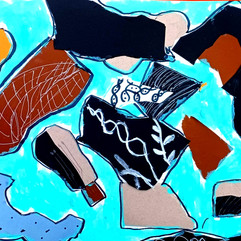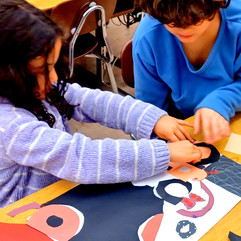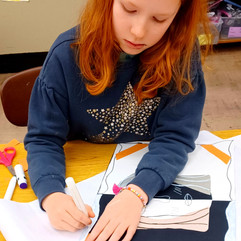George Braque
- Serene
- Jan 30, 2024
- 2 min read
Georges Braque
France 1882-1963


Georges Braque was a major 20th-century French painter, collagist, draughtsman, printmaker and sculptor. His most notable contributions were in his alliance with Fauvism from 1905, and the role he played in the development of Cubism. Braque's work between 1908 and 1912 is closely associated with that of his colleague Pablo Picasso. Eclipsed by Picasso, he is one of the unsung heroes of the art of the 20th century.
He was born in Argenteuil, France and trained to be a house painter and decorator like his father and grandfather. However, he was very interested in art, so he also studied painting during evenings at the École des Beaux-Arts, and later went on to study in Paris. Braque's earliest works were impressionistic, but after seeing the work exhibited by the "Fauves" in 1905, he adopted a Fauvist style. His work also reflected his new interest in geometry and simultaneous perspective. He conducted an intense study of the effects of light and perspective and the technical means that painters use to represent these effects and veered away from standard artistic conventions. He frequently reduced an architectural structure to a geometric form approximating a cube and rendered shading to appear both flat and three-dimensional by fragmenting the image. These early experiments led to the development of “Cubism.
Early in his career he was a friend and roommate of Picasso. Much of Picasso’s work and imagery was influenced and “borrowed” from Braque and in some cases, they were virtually impossible to distinguish from each other. They collaborated for several years, and the Cubist style spread quickly throughout Paris and then Europe. Braque and Picasso’s productive collaboration continued, and they worked closely together until the beginning of World War I, when Braque enlisted with the French Army, where he received a severe head injury in battle and suffered temporary blindness that required a long period of recuperation.
Braque resumed painting in late 1916. Working alone, he began to moderate the rigid abstraction of cubism. He relocated to the coast of Normandy and developed a more personal style characterized by brilliant color, textured surfaces, and continued to work during the remainder of his life, producing a considerable number of paintings, graphics, and sculptures.
Braque invented the papier collé technique and was the first artist to combine stenciling, letters and words in his work, which set the stage for many contemporary artists and the abstract movement of the 1950’s and beyond. Braque’s experiments were the vehicle of the modern art movement. Picasso's big personality and lifestyle gained most of the attention for many of the innovations led by Braque who chose a quieter life and was left in the shadows; however, his groundbreaking work has been recognized and is in most major museums throughout the world and he is regarded as one of most important artists of the 20th century and a driving force behind many notable artists working today.
It is always so interesting to see what the students
do with the same materials and how they are inspired
by an artist while doing their own interpretation.
That was case this week with the Braque lesson.
This diverse array of pieces incorporated his techniques of line , black and white for contrast, printmaking textures and paint.















































Comments